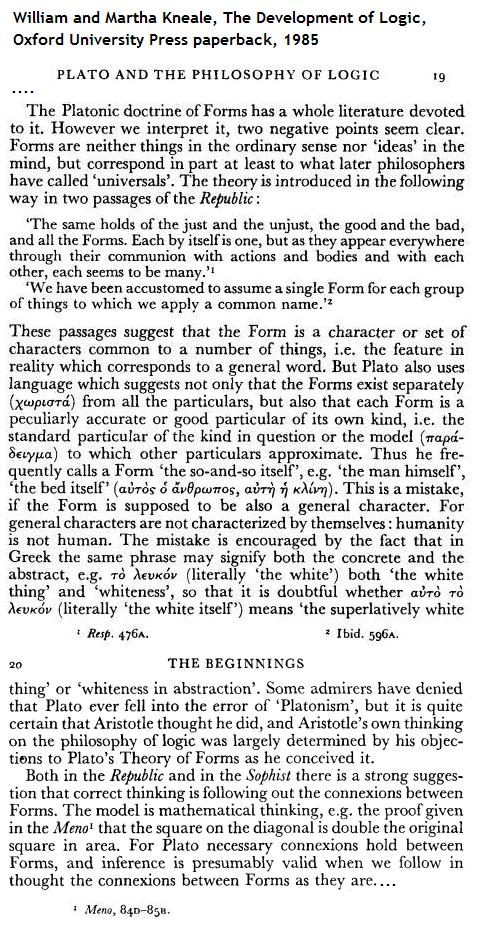Blaise Pascal:
"L’unité jointe à l’infini ne l’augmente de rien, non plus qu’un pied à une mesure infinie. Le fini s’anéantit en présence de l’infini, et devient un pur néant….
Nous connaissons qu’il y a un infini, et ignorons sa nature. Comme nous savons qu’il est faux que les nombres soient finis, donc il est vrai qu’il y a un infini en nombre. Mais nous ne savons ce qu’il est: il est faux qu’il soit pair, il est faux qu’il soit impair; car, en ajoutant 1 unité, il ne change point de nature; cependant c’est un nombre, et tout nombre est pair ou impair (il est vrai que cela s’entend de tout nombre fini). Ainsi…."
"Unity joined to infinity adds nothing to it, no more than one foot to an infinite measure. The finite is annihilated in the presence of the infinite, and becomes a pure nothing….
We know that there is an infinite, and are ignorant of its nature. As we know it to be false that numbers are finite, it is therefore true that there is an infinity in number. But we do not know what it is. It is false that it is even, it is false that it is odd; for the addition of a unit can make no change in its nature. Yet it is a number, and every number is odd or even (this is certainly true of every finite number). So…."
— Pensées (trans. W. F. Trotter), Courier Dover Publications, 2003
"
Le fini s’anéantit
en présence de l’infini,
et devient un pur néant…."
Un Pur Néant:
"So did God cause the big bang?
Overcome by metaphysical lassitude,
I finally reach over to my bookshelf
for The Devil's Bible.
Turning to Genesis I read:
'In the beginning
there was nothing.
And God said,
'Let there be light!'
And there was still nothing,
but now you could see it.'"
— Jim Holt, Big-Bang Theology,
Slate's "High Concept" department
Illustration:
Ainsi….
"In the garden of Adding,
Live Even and Odd"
— E. L. Doctorow
Illustration:

4 + 5 = 9.
















